August 6, 2020
By Lea Nickless, research curator
Cults are a source of deep-seated fascination for me and have been since the Jonestown massacre in 1978. I was in high school then, in California, when 900 members of the Peoples Temple of the Disciples of Christ died in a mass murder/suicide by drinking cyanide-laced Kool-Aid at the order of their leader, Jim Jones. Even though the event took place in Jonestown, Guyana, 4,500 miles from my suburban home, Jones' Peoples Temple—a cult combining elements of Christianity, socialism, and communism with a dose of racial equality—was headquartered in San Francisco, a mere 100 miles down the road. My father, a cameraman for NBC News, was frequently on location there, interviewing former members and bereaved families and trying to make sense of this seemingly out-of-the-blue, incomprehensible event.
Since then, and in great part as a result of my work at The Wolfsonian, I have learned to take a measured view of world events, noticing patterns of human behavior and cycles of action and reaction. Charismatic and power-seeking leaders forming fringe religions or cults have been around for eons. Marginal factions seeking divine revelation, immortality, or spiritual community will continue to establish non-normative groups into the future, some morphing into accepted religions while others endure anti-cult reactions or quietly phase out.
While we often view the 100 years between 1850 and 1950 through the lens of the Industrial Revolution and the life-changing advances in technology and science that resulted, this period also gave rise to a bewildering array of esoteric belief systems. Spiritualism boomed in the 19th century, followed by the Theosophical Society, an international movement bridging eastern and western philosophical traditions, and an almost mainstream obsession with the occult. Florida even had its own quirky cults, including the Koreshan community established in 1894 by Cyrus Teed near Fort Myers Beach. Teed believed, among other things, that the earth is a stationary concave cell containing all life, including the solar system.
Two significant 20th-century movements represented in The Wolfsonian's collection are the I AM movement led by Guy and Edna Ballard and the Silver Shirts established by William Dudley Pelley. Founded in the 1930s during the Great Depression, both movements had a religiopolitical aspect with nationalistic underpinnings. Both were also headed by ambitious, self-promoting, charismatic individuals who understood the importance of graphic design in producing strong, persuasive materials for their audiences. The Ballards advertised heavily on the radio and claimed to have one million followers by the end of the decade, while Pelley's Silver Shirts enrollment may have reached 25,000. Each benefited from a trend for metaphysical mail-order tracts and courses and the political turmoil and economic anxiety created by the Depression. The Wolfsonian has examples of sheet music from the I AM movement and magazines and pamphlets published by Pelley.
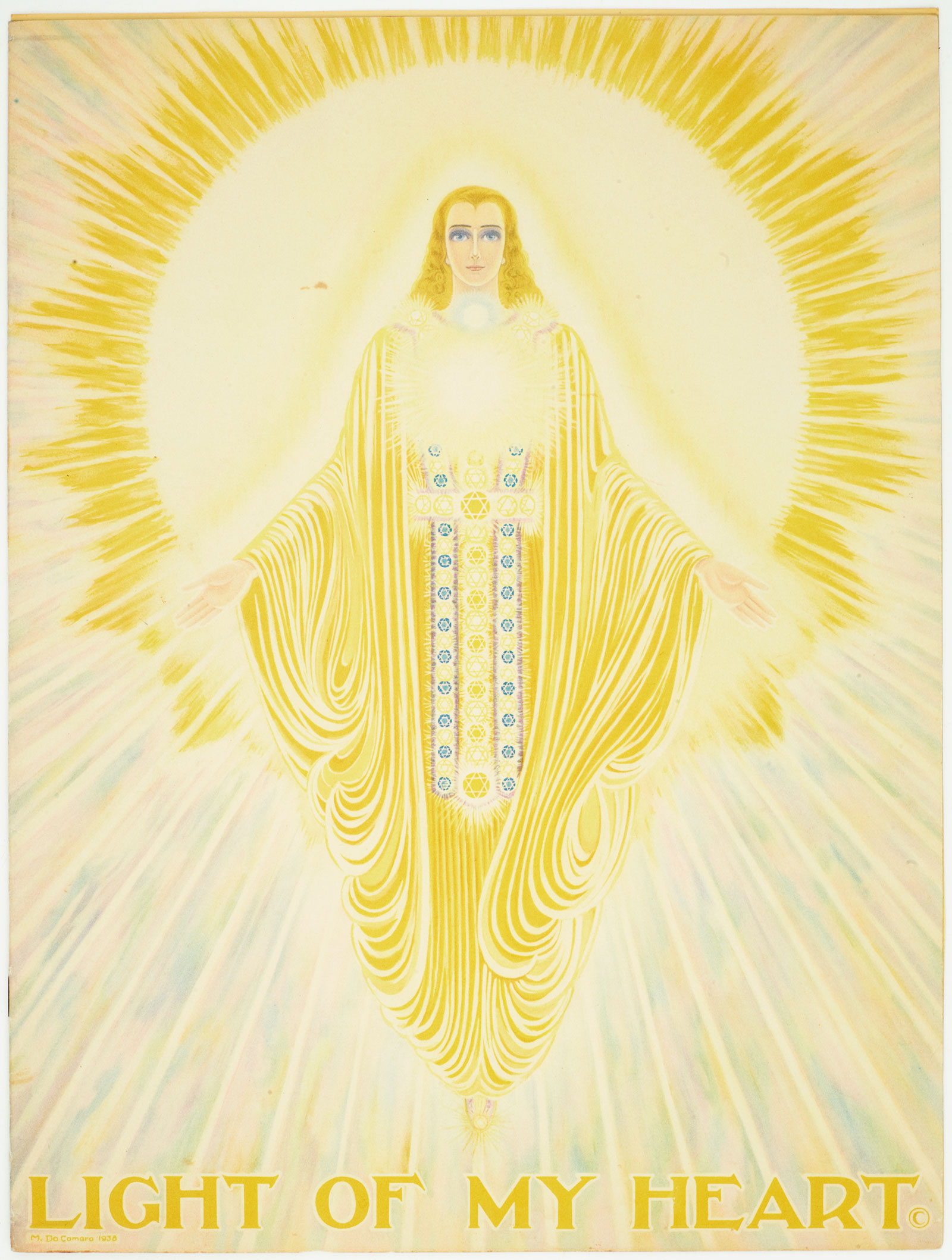
Sheet music, Light of My Heart, 1938. Godfré Ray King (b. Guy Ballard), composer. May DaCamara, designer. The Mitchell Wolfson, Jr. Private Collection, T2020.1026.2.
This sheet music cover is intended to represent the "Higher Mental Body" of Guy Ballard.
While on a hike on Mount Shasta in 1930, Guy Ballard, a gold prospector, claimed he had an encounter with the Ascended Master Saint Germain, an 18th-century mystic, who chose Ballard as his earthly vehicle, making him and his wife Edna Accredited Messengers of the Masters. After this transformative experience, Ballard wrote the book Unveiled Mysteries under the pseudonym of Godfré Ray King. This launched the I AM cult, a fusion of borrowed occult and theosophical ideas with a right-wing nationalist bent. Ballard, claiming to be the reincarnation of George Washington, harbored ambitions of occupying the White House and bringing a "New Government" to America. He provided followers with instruction on how to mentally "blast, dissolve, and annihilate" anyone who stood in their way, specifically President Franklin Roosevelt and wife Eleanor, whom he targeted for psychic assassination.
The Ballards —Guy, Edna, and their son Donald—moved their headquarters to Los Angeles in 1932 and soon met up with graphic artist Charles Sindelar, who began producing portraits of Ascended Masters and designing their monthly journal, The Voice of the I AM. Artist May DaCamara created much of the imagery for the sheet music of compositions written by Ballard (as channeled through the entity Godfré Ray King) and performed in services. A peculiar design aesthetic and color palette evolved, featuring large-eyed portraits of Ascended Masters (as well as the Ballards), a focus on rays of light and bolts of electricity to frame the central image, and representations, symbolic and otherwise, of the United States. Donald's wife Marjorie, his "twin ray or soul mate," was depicted on the cover of the sheet music Nada Our Love with enormous blue eyes, ringlets of golden hair, and a strand of large diamonds at her neck. The colors red and black were avoided, and text was usually printed in purple. Masses of books, pamphlets, charts, sheet music, phonograph records, and photographs of the Ballards were sold through their Chicago-based Saint Germain Press.
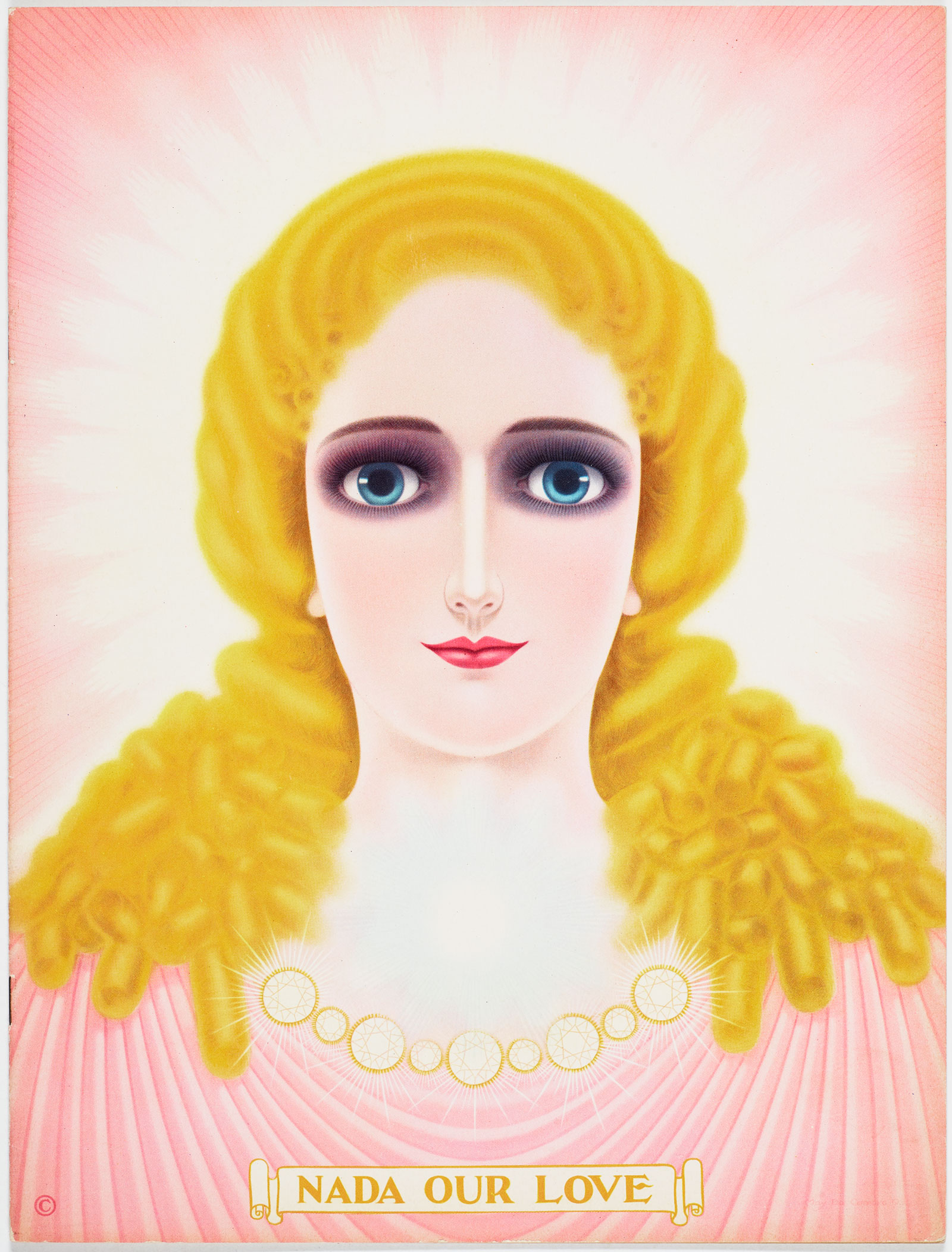
Sheet music, Nada Our Love, 1939. Godfré Ray King (b. Guy Ballard), composer. May DaCamara, designer. The Wolfsonian–FIU, The Mitchell Wolfson, Jr. Collection, XB1991.583.
This sheet music cover depicts Donald Ballard's wife Marjorie as Ascended Master Nada, his "twin ray or soul mate."
The Ballards gained popularity as they toured the nation, airing nightly radio broadcasts and promising healing and prosperity. They also claimed to have averted international disasters, such as stopping Nazi submarines from bombing the Panama Canal through the application of mental focus. By 1938, they had amassed close to $3 million from sales and "love gifts" donated by adherents eager to receive divine blessings. Despite his claims of immortality, Guy Ballard died unexpectedly in 1939. A memorial notice in the San Bernadino County Sun oddly mentioned that Ballard owned "four high-priced canary-colored automobiles." In 1940, Marjorie, now estranged from Donald, reported to the Associated Press that the Ballards lived in a multi-room suite in one of the most expensive downtown Los Angeles hotels and that Edna routinely wore a 12-carat diamond and double orchid corsages.
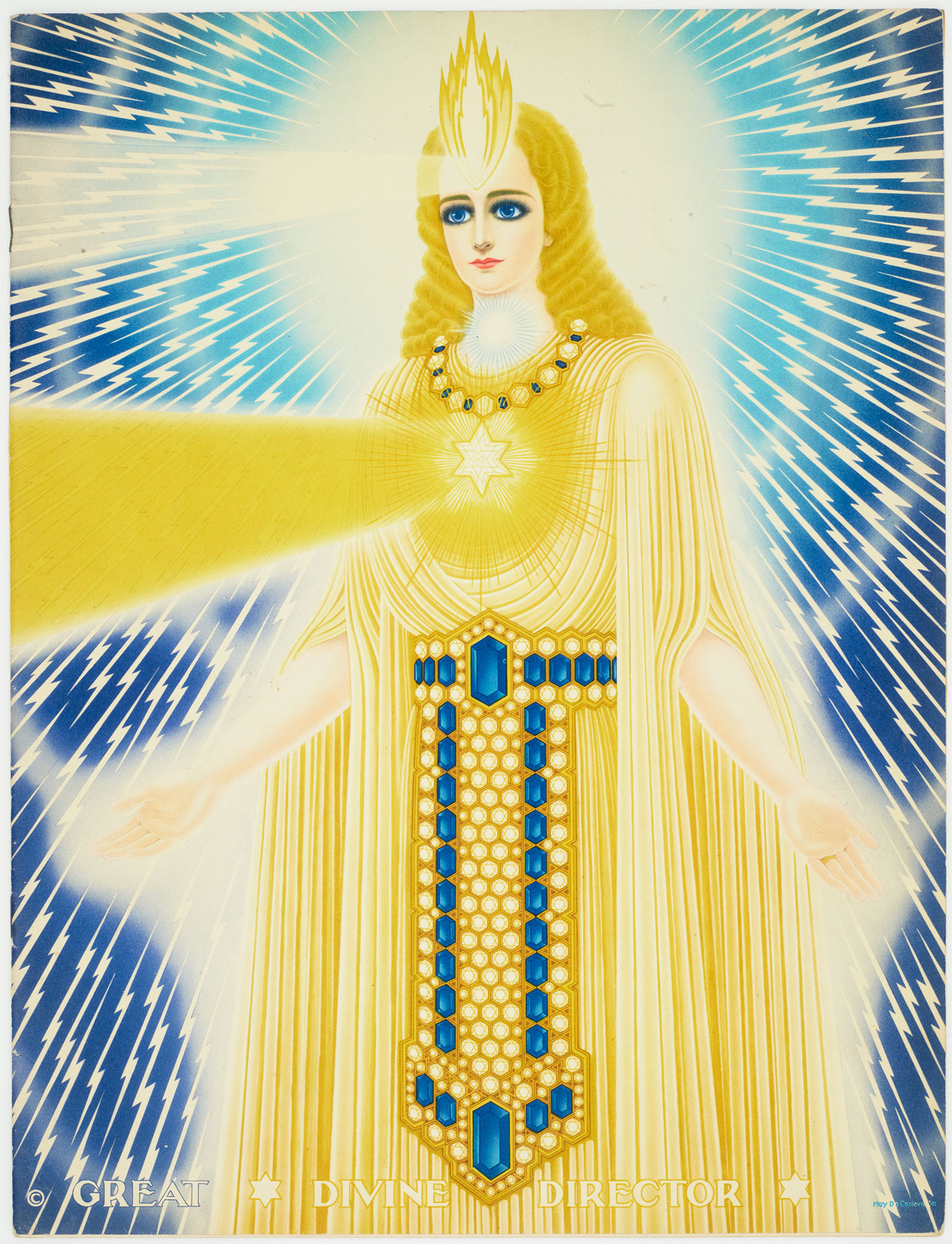
Sheet music, Great Divine Director, 1941. Godfré Ray King (b. Guy Ballard), composer. May DaCamara, designer. The Mitchell Wolfson, Jr. Private Collection, T2020.1026.3.
Great Divine Director is the source of knowledge received by Ballard. Quote from sheet music tribute page, "The Light Rays which He projects are actual Light, Substance, Energy, and Perfection from his Ascended Master Body."
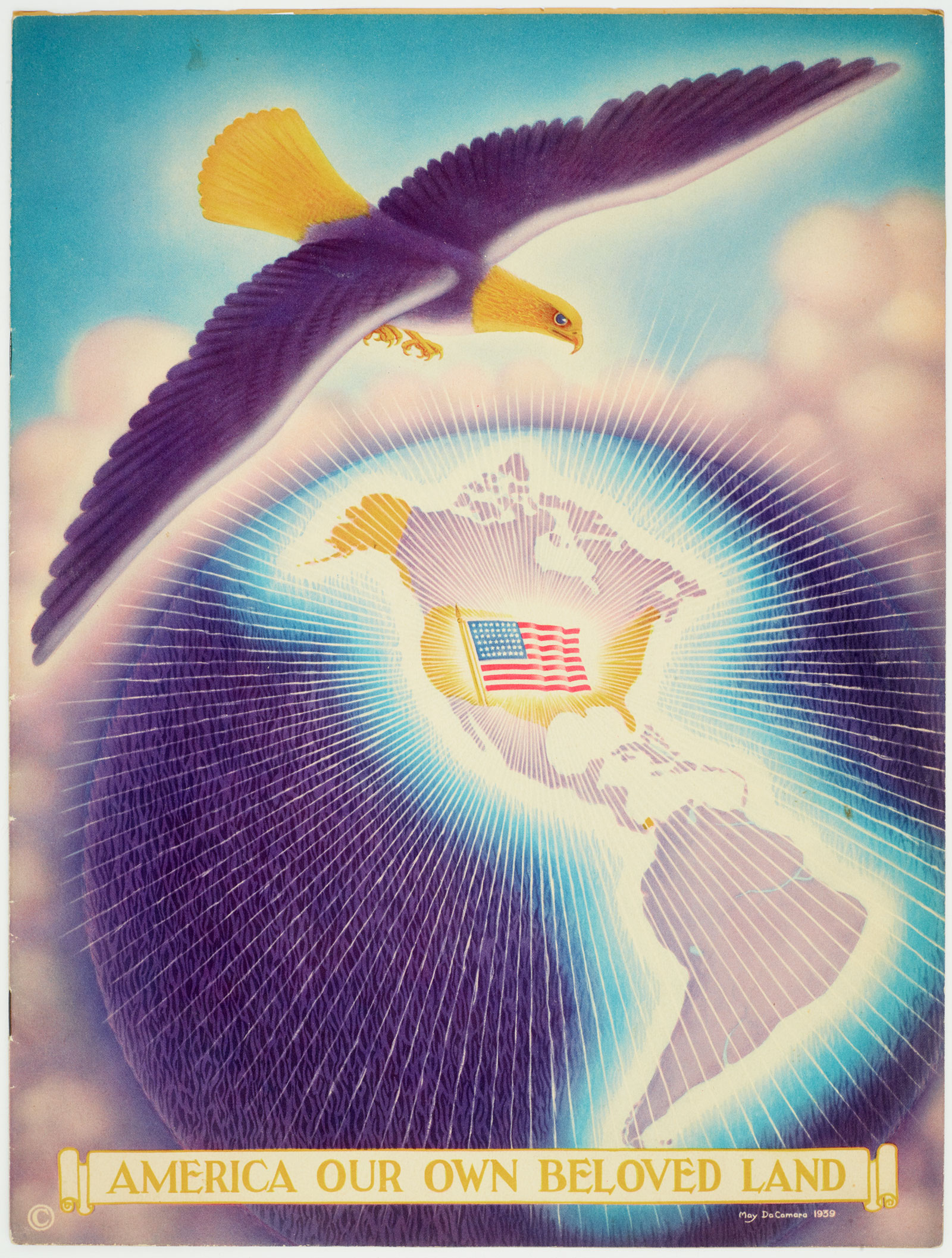
Sheet music, America Our Own Beloved Land, 1940. Godfré Ray King (b. Guy Ballard), composer. May DaCamara, designer. The Mitchell Wolfson, Jr. Private Collection, T2020.1026.7.
With the world on the brink of war, I AM's graphic imagery focused more directly on the United States. The dedication page of this piece of sheet music includes the following quote, "This song is sent forth with our heart’s most intense call for the Victory and Power of Light to fill every person, place, condition and thing in the United States of America and the Americas."
It wasn't long before the U.S. government got wind of the untaxed dollars flowing to the Ballards and indicted them on charges of fraudulently collecting donations for claims that they themselves did not believe. Interestingly, the U.S. Supreme Court overthrew the conviction in 1944, resulting in one of the most important rulings concerning religion, affirming that religious doctrine does not have to be proven to be true or false. In his ruling, Judge Douglas stated, "The religious views espoused by respondents might seem incredible, if not preposterous, to most people. But if those doctrines are subject to trial before a jury charged with finding their truth or falsity, then the same can be done with the religious beliefs of any sect."
Around the same time, writer and publisher William Dudley Pelley claimed a personal psychic experience in the mountains above Pasadena that he described in a 1929 essay titled "My Seven Minutes in Eternity." Published in The American Magazine, the article detailed his departure from his body and encounter with two Ascended Masters in the astral sphere. In 1930, Pelley started publishing the first of his metaphysical/political journals, The New Liberator: The Magazine of Earthly Illumination from the Wider/Higher Worlds, which contained a confusing amalgamation of spiritual and political ideas that he later labeled Soulcraft. A profusion of publications followed, in which Pelley advertised himself as a leader of the cosmic forces of light.
Like the Ballards, Pelley believed he could purify the nation and lead it out of the Great Depression—he just had a more aggressive approach. He relocated to Asheville, North Carolina, where, on the day that Adolf Hitler became chancellor of Germany in 1933, he established the Silver Legion of America, or Silver Shirts. This group was modeled after the German Nazi party with a foundation of fascist and anti-Semitic ideologies. In his publications, he railed against President Franklin D. Roosevelt's New Deal, claiming it to be a global Jewish conspiracy. Pelley called for a "Christian Commonwealth" combining principles of racism, nationalism, and theocracy, while excluding Jews and non-whites. He even ran for U.S. President in 1936 on the Christian Party ballot.
Although Pelley's design aesthetic was not as evolved as the Ballards, he successfully promoted his message through a relentless series of mystical manifestos. In 1932, he launched Liberation magazine, channeling its contents, as with all of his publications: a text box on the title page stated, "The contents of this magazine, unless otherwise designated, were obtained clairaudiently via the Psychic Radio from great souls who have graduated out of this three-dimensional world to other areas of time and space." The February 1932 issue depicted a stern Abraham Lincoln in red silhouette, presumably to illustrate an article within, "Was Lincoln Guided by the Higher Masters?" In Liberation, Pelley blamed the Civil War and President Lincoln's assassination on a Jewish conspiracy.
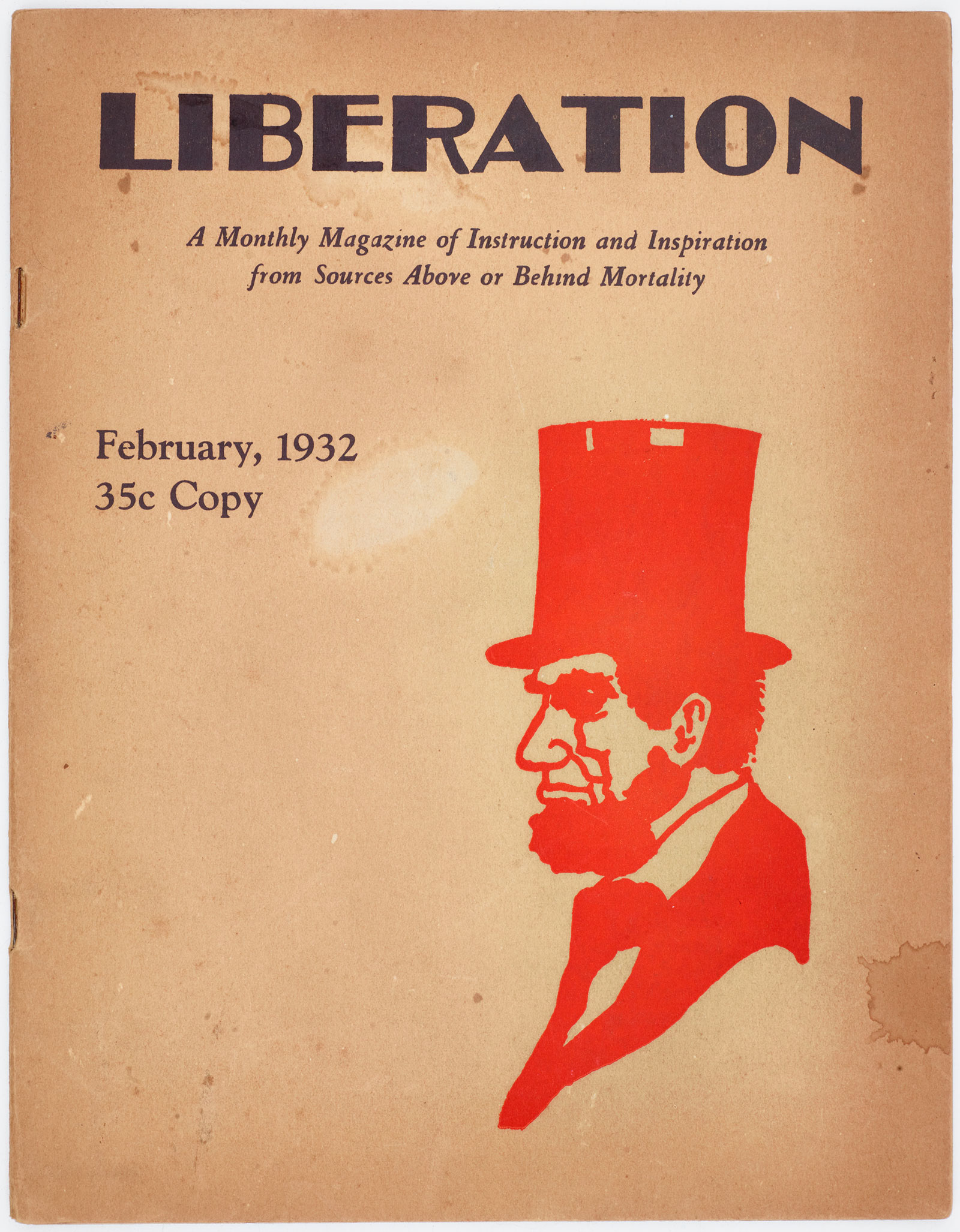
In 1937, Pelley started publishing the magazine Reality with the tagline "consciousness has many octaves and all together produce reality." Graphic artist Hial Cummings created basic illustrations—he was described as a cartoonist for Pelley Publishers in 1939 newspaper articles. The cover of Reality's March 1939 issue depicts a benign leaf-patterned border with a contrasting image of marching Silver Shirt members carrying an American flag and a white flag with a red L, the symbol of the Silver Shirts. The letter L stood for Loyalty to America, Liberation from materialism and the Silver Legion itself. America's entry into the Second World War marked the beginning of the end of Pelley's influence. The June 1938 issue depicts an idealized skyscraper form rising from the smoldering remains of an urban landscape. The Silver Legion was effectively dissolved the day after Pearl Harbor, when authorities called for the arrest of any individuals associated with the group. In 1942, Pelley was indicted in Indiana for sedition, convicted, and sentenced to 15 years in jail.
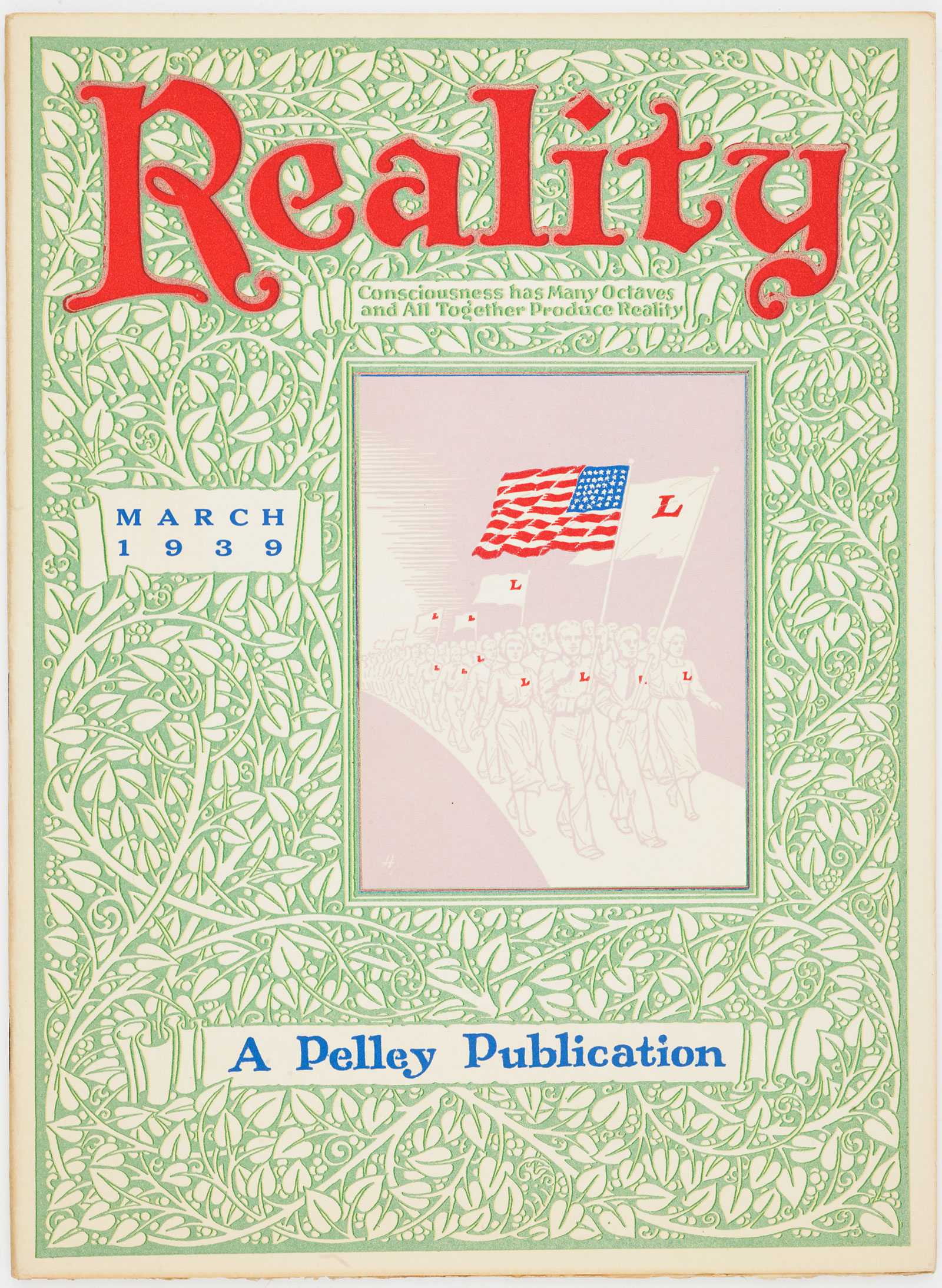
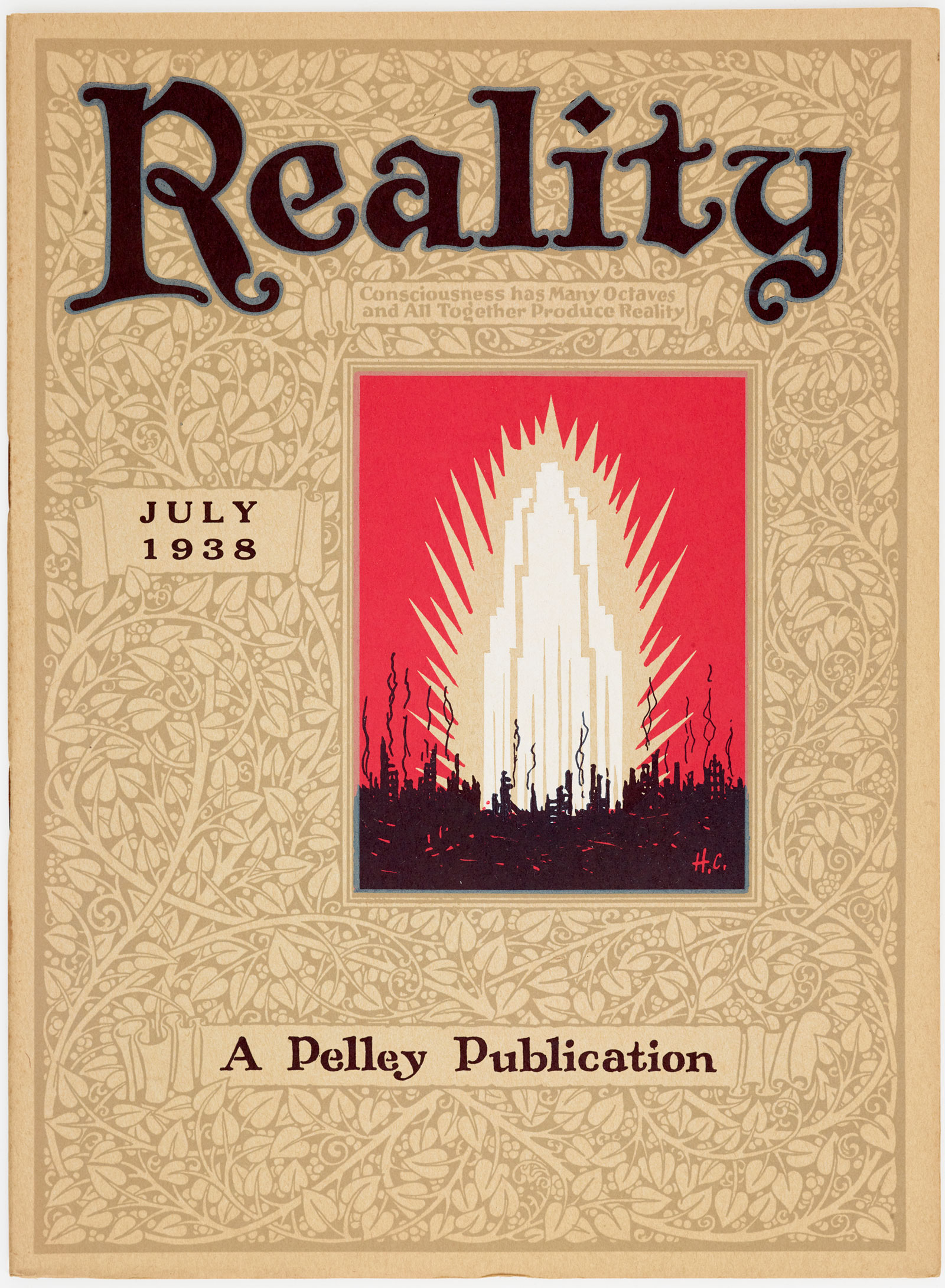
In 1939, Pelley published a pamphlet titled Dies' Political Posse stating that it provides "information on what to expect when the great congressional probing racket reaches into your home city and you are subpoenaed like a suspected criminal for daring to love and defend your country against millions of politically-protected and Depression-working Jews." Pelley was responding to The House Committee on Un-American Activities' investigating committee headed by Martin Dies. In 1940, Pelley surrendered to the Dies committee.
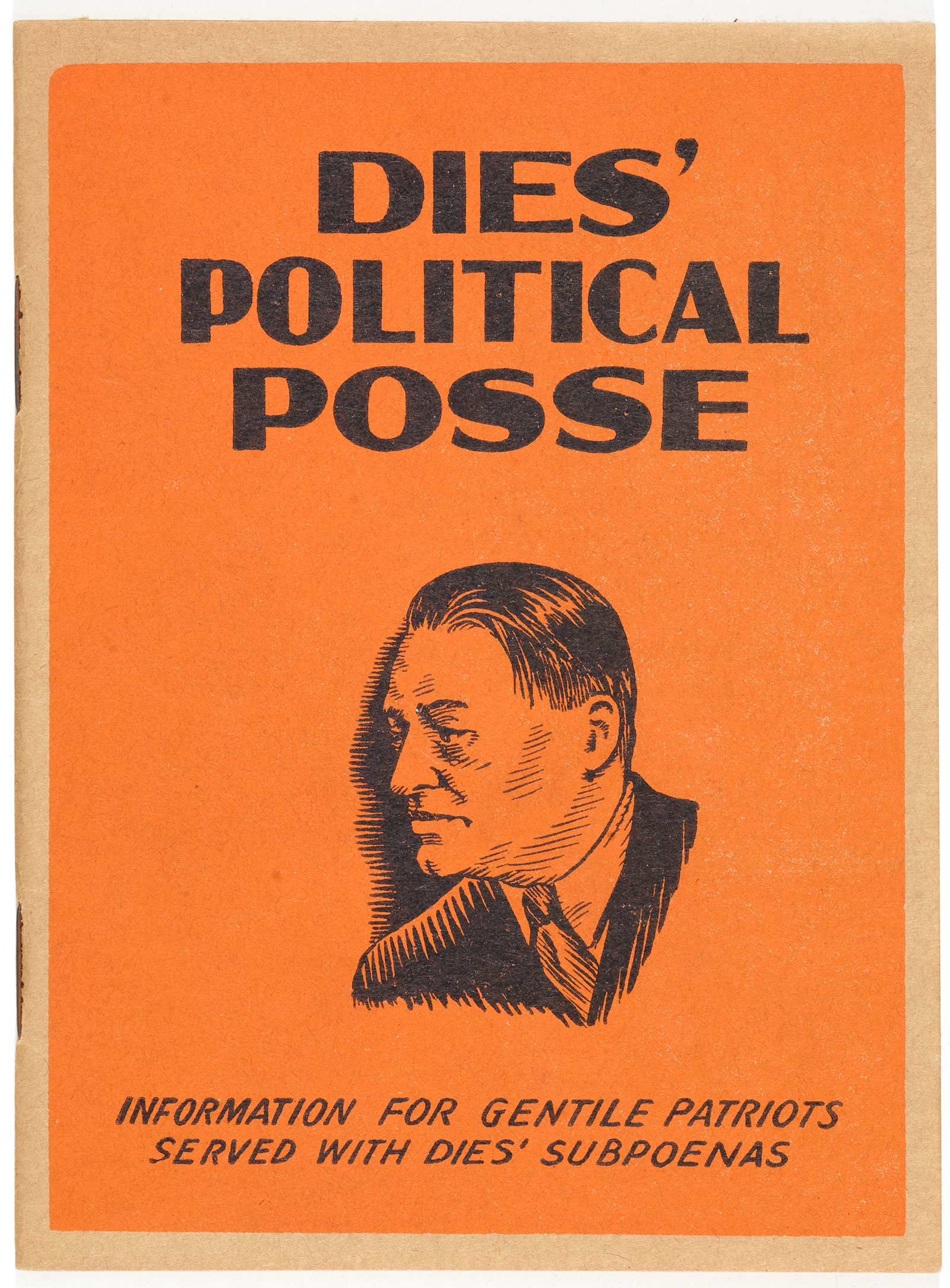
Despite Pelley's oddly disparate ideas, he had far-reaching influence during this period. American poet and critic Ezra Pound, who was living in Italy and supporting Mussolini's fascist regime, was a fan. He subscribed to Liberation magazine, was said to be a Silver Shirt, and embraced Pelley's anti-Semitic theories. After the Second World War, Pound was arrested for treason, judged unfit to stand trial, and incarcerated in a psychiatric hospital for over 12 years.
This material and the omnipresence of cults throughout history are indicative of something ingrained in human nature—an innate instinct to belong and find meaning. Cults also prey on a tendency to endow charismatic (and often narcissistic) leaders with omnipotent powers as they advocate appealing philosophies. While the Internet has provided previously unimaginable avenues for making connection—a new way to find one's tribe—it has also created opportunities for immersion in the subcultural world of new religious movements (NRM). The Wolfsonian's holdings provide excellent tools for exploring ways that visual media can influence and persuade, often unconsciously on the part of the viewer, and for providing grounding in the critical evaluation of media within historical context.
